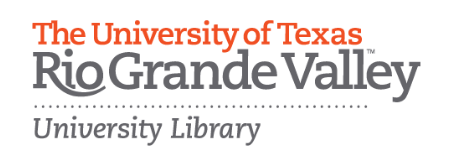Analyzing Course Needs
Transforming your course to include OER can be as simple as switching one material for another or as radical as completely changing your teaching style. This section outlines some key questions and considerations you should ask yourself before finding OER to support the course needs.

What is the purpose of your course?
When integrating OER into your course, you have the opportunity to critically evaluate your methods and alter them to better meet your needs. One way to go about this is to use backward design for your project.
Backward design is a framework for planning your course around its intended outcomes. There are three stages to the backward design process:
- Identify desired results,
- Determine acceptable evidence, and
- Plan learning experiences and instruction.
You might notice that this approach does not end with “create and/or curate educational content.” Instead, it ends with more planning. The purpose of backward design is not to be done with your course transformation in a quick 3-step process. Instead, it asks instructors to question the processes and materials they currently use and to start over by plotting out what is needed to meet your course outcomes.
Thinking critically about the purpose of your course and the learning outcomes you want your students to meet is one way to ensure that you provide an excellent learning experience for your students.
Considerations
- What do I want my students to learn?
- How will I communicate to students that the concepts I present are valuable?
- How will I assess my students’ understanding of core concepts?
Who is your audience?
Once you’ve decided that you’re ready to use OER in your course, it’s important to consider your target audience(s).
Considerations
- Do you have a primary audience? For example, majors or non-majors.
- Does your audience belong to a specific geographic location or ethnicity?
- Are there cultural differences you need to consider before selecting your resources?
Does the resource you need already exist?
It is generally a good idea to look around at what content is available for your course before creating something new. There are two reasons for this:
- The resource(s) you want to create/use may already exist in the format you want.
- Your own teaching materials could be adapted for use as. For example, lecture notes can be an invaluable teaching aid for courses with no excellent textbooks available.
We will discuss where and how to find OER in the next section.
Considerations
- What changes would you need to make to use your own content?
- What types and formats of resources are you looking for?
- Where should you begin your search? (See the next section in this unit for help.)
How will you disseminate your resource(s)?
Whether you are using an OER as-is or creating something from scratch, one of the first considerations you should take into account is how you will share the resource(s) with your students. This may be as simple as a link in an LMS to a published resource (whether openly licensed or shared via more restrictive copyright), or you may need to work with your bookstore to ensure students have access there, or through other means.
Considerations
- What is the license of the material and how are you allowed to use, adapt, and share it?
- If you are adapting or creating an OER, will it be shared in an institutional repository, on OERTX or OER Commons, or through another third-party platform?
What expertise is required to redesign your course?
Redesigning a course to harness OER can be a considerable amount of work, especially if you’re starting from scratch. It’s important to consider all aspects for your project including instructional design, technology, and graphics before you jump in.
Fortunately, integrating an existing OER into your curriculum doesn’t need to be a one-person job. For example, instructional designers, librarians, and/or staff in your Center for Teaching Excellence or its equivalent on your campus can provide guidance to help you incorporate open resources into your course.
Considerations
- What aspects of the project are you most and least comfortable with?
- What support is available to help you structure, develop, and disseminate your project?
- Is there support available to make your OER accessible in multiple formats?
Through the process outlined above, you might be surprised by (and hopefully proud of) the improvements to your course design! This can be an added benefit to choosing to utilize OER to better support student success.

